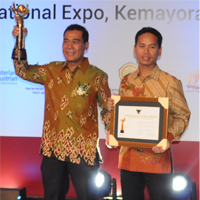History of Java Teak

Teak forest in Bojonegoro, East Java
According to the experts (Altona, 1922; Charles, 1960) Java Teak comes from India allegedly led by Hindu people from India, at the end of time Hindu (X1V beginning of the century, until the early sixteenth century). But some experts deny this and claim that there is no reason strong enough to claim that identity is not native Java (Written et al., 1999).
According to Peluso (1991), when Dutch traders (VOC) landed on Java in the mid-seventeenth century, they found a mix of stands of teak or teak nearly pure stands that stretched hundreds of miles in the middle of the island of Java. If the hypothesis of identity of india introduction is justified, then the introduction has been held at an older age, at least not around the sixth century, when the cultural exchange between India and Indonesia is very strong progress. But there is no historical record of the reinforcing expectations.
On the other hand the introduction hypothesis teak from India to Java, also raises difficult questions, especially about the discovery of natural teak populations in some remote islands in Indonesia such as in Madura, Muna, and their absence in the islands other than Java while on the island – the island (eg Sumatra ) also plays an important role in human migration routes between India, Thailand, Cambodga, China, Japan.
According to the Gartner (1956) Altona dubious hypotheses, as well as Troup (1921) who tend to assume that the presence of teak in Java and several islands in Indonesia are natural. Kertadikara research (1992) who studied the genetic diversity of a population of Indian teak, Java and Thailand with using isoenzym and morphological data, indicates that the identity of the Indian population has a very unique genetic structure of populations very different from Java teak and Thailand. While population genetic structure of Thai identity is closer to the population genetic structure of Javanese teak. The results of these studies indicate that the first population of Indian identity have long been geographically isolated from other teak populations Second, if the hypothesis of identity of india introduction to Java is justified, should be seen closeness between population genetic structure of Java and India.
Based on that Kertadikara (1992) tends to the natural migration hypothesis of identity of its natural distribution centers in mainland southeast Asia (most likely located in Myanmar), using the island to the mainland which connects the islands of Indonesia Asia the Pleistocene era. Relationship between mainland Asia and Indonesia archipelago is made possible due to reduction in sea levels of about 100 to 120 m lower than the condition now.
taken from wikipedia.org








